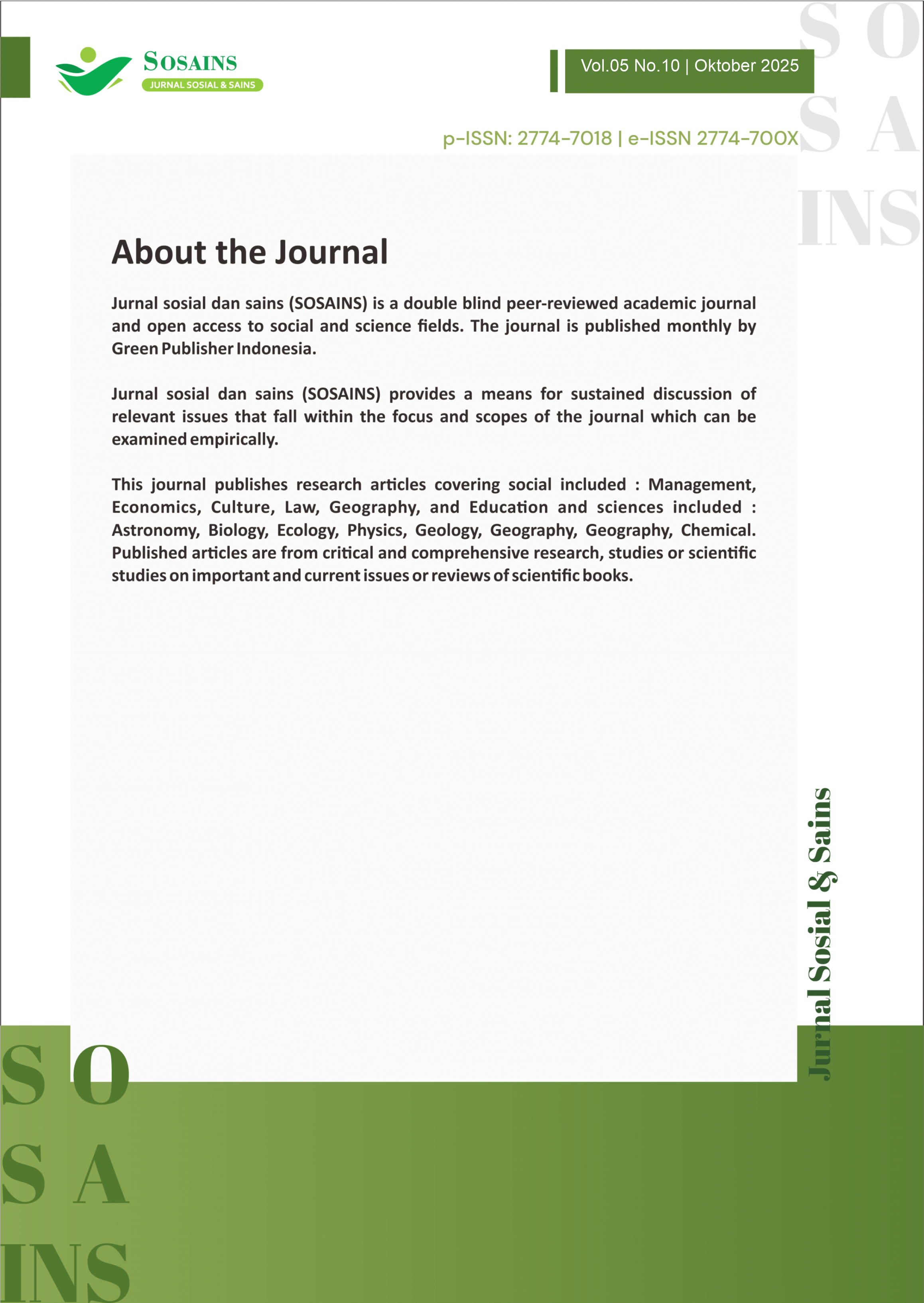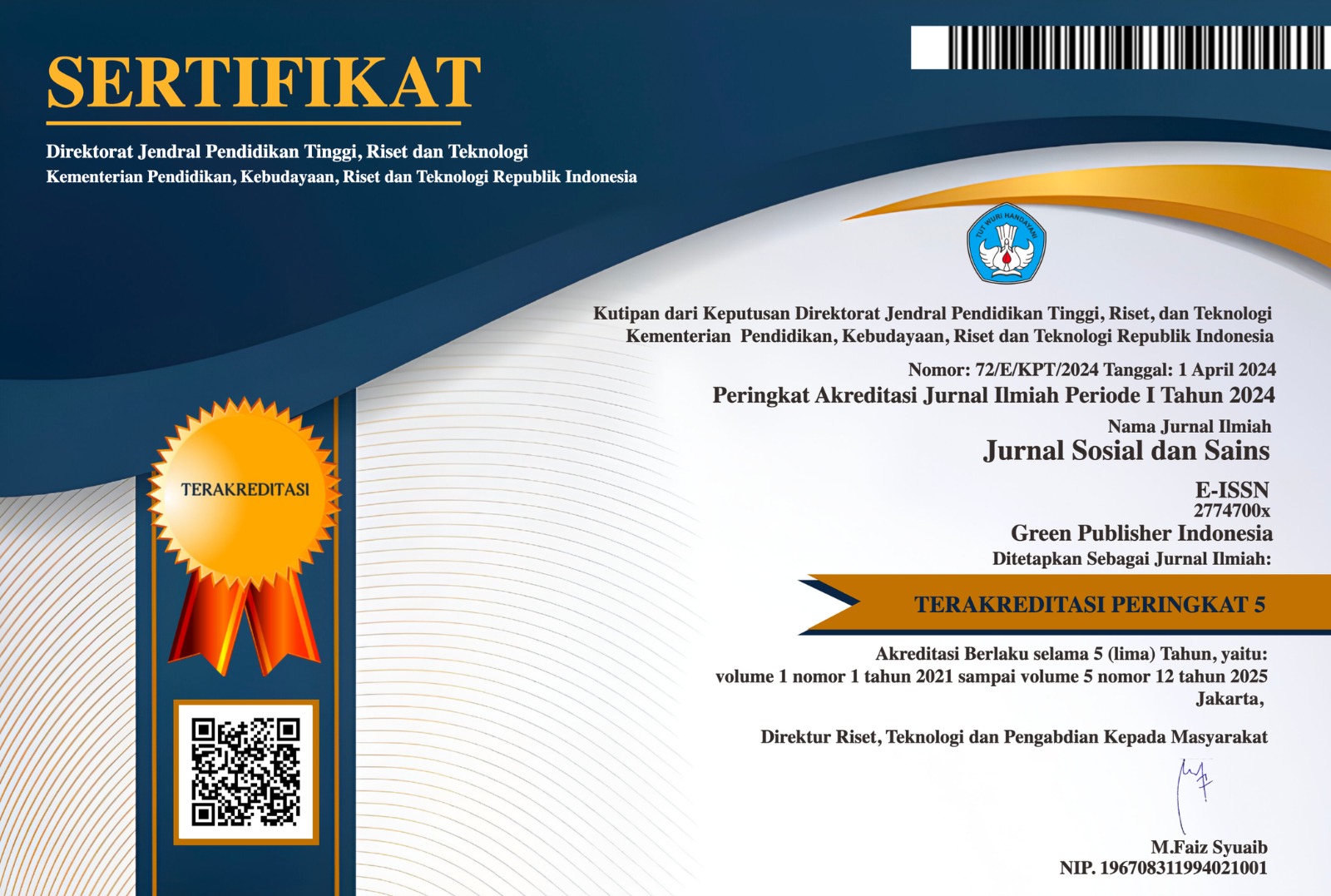Analisis Kebutuhan Perawat di Instalasi Rawat Inap dengan Pendekatan Workload Indicators of Staffing Need di Rumah Sakit Umum Aulia
DOI:
https://doi.org/10.59188/jurnalsosains.v5i10.32541Keywords:
nurse, workload, WISN, inpatient unit, KRISAbstract
Nurses constitute the largest proportion of healthcare workers in hospitals and play a crucial role in ensuring the quality of nursing care. A high workload without proper human resource planning can lead to a decline in service quality and patient safety. This study aimed to analyze the nursing workforce requirements in the Inpatient Unit of Aulia General Hospital using the Workload Indicators of Staffing Need (WISN) approach. The research employed a mixed-methods design with a sequential explanatory approach, beginning with a quantitative descriptive analysis to calculate the ideal number of nurses based on workload, followed by qualitative analysis through structured interviews to elaborate on the quantitative findings. Qualitative research subjects included the hospital director, head of human resources and general affairs, head of the human resources department, head of nursing, ward head, registration staff, staff nurses, patients, and patients’ families. The WISN calculation indicated that the ideal number of nurses in the Inpatient Unit was 18, the workload standard was determined to be 17.92, while the allowance standard was 0.11 while only 15 were available, resulting in a shortage of 3 nurses and a WISN ratio of 0.83. The qualitative analysis identified the main causes of this gap, including high direct and indirect workloads, nurses’ involvement in non-nursing tasks, and limited facilities. This study recommends several strategies, including the implementation of a middle shift to anticipate patient surges, redistribution of workload based on the WISN method supported by internal SOPs. In addition, strengthening clinical and managerial competencies, utilizing an integrated Hospital Information System (SIMRS), conducting regular workload evaluations, implementing a performance-based reward and punishment system, and investing in nursing technology are essential steps to improve efficiency and the quality of care. With these interventions, RSU Aulia is expected to reduce nurses’ workload, enhance patient satisfaction, and achieve service standards in accordance with KRIS regulations.
Downloads
Published
How to Cite
Issue
Section
License
Copyright (c) 2025 Febrina Sintari, Eka Yoshida, Titus Indrajaya

This work is licensed under a Creative Commons Attribution-ShareAlike 4.0 International License.
Authors who publish with this journal agree to the following terms:
- Authors retain copyright and grant the journal right of first publication with the work simultaneously licensed under a Creative Commons Attribution-ShareAlike 4.0 International (CC-BY-SA). that allows others to share the work with an acknowledgement of the work's authorship and initial publication in this journal.
- Authors are able to enter into separate, additional contractual arrangements for the non-exclusive distribution of the journal's published version of the work (e.g., post it to an institutional repository or publish it in a book), with an acknowledgement of its initial publication in this journal.
- Authors are permitted and encouraged to post their work online (e.g., in institutional repositories or on their website) prior to and during the submission process, as it can lead to productive exchanges, as well as earlier and greater citation of published work.








